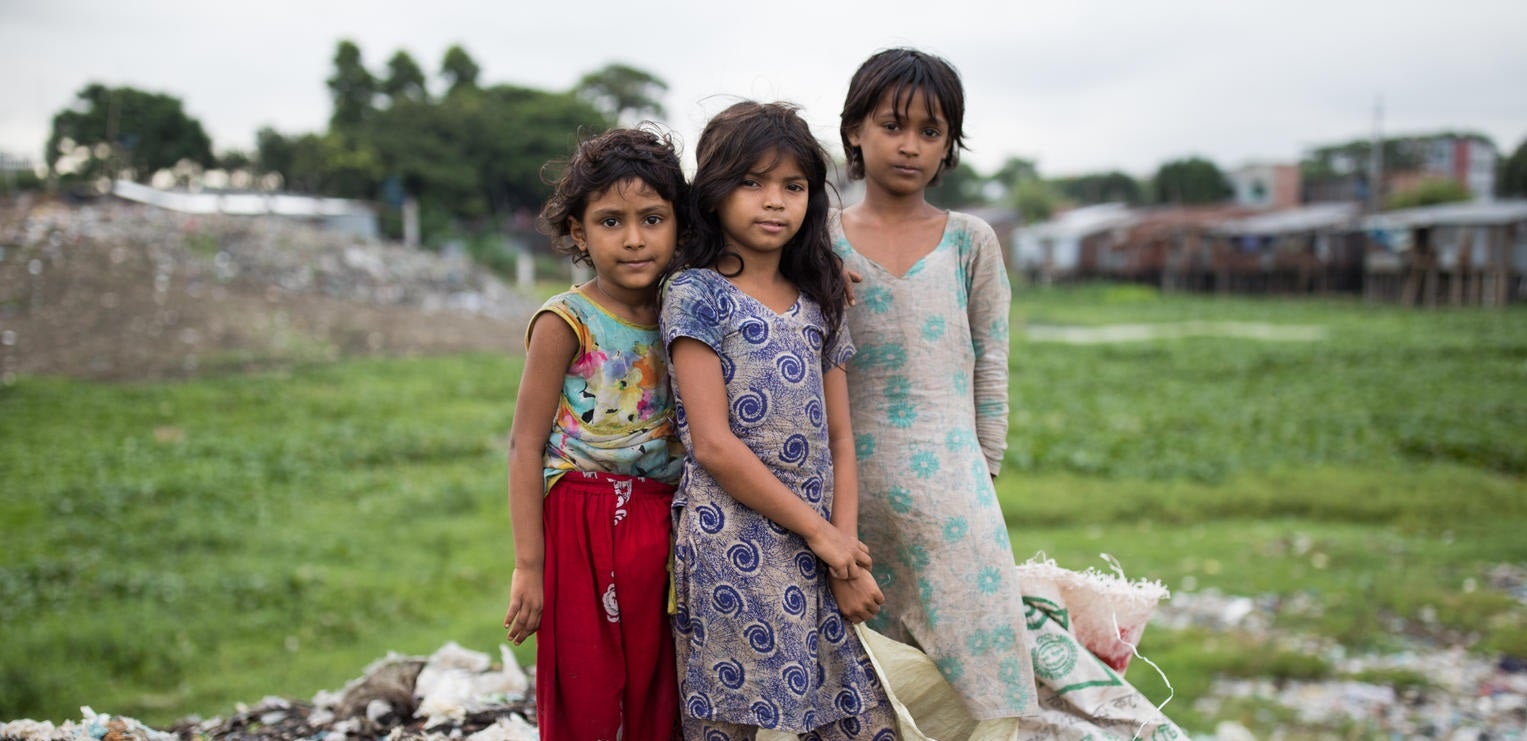The Rohingya are a minority ethnic group in South Asia, living in exile or internally displaced within Myanmar.
A vibrant and resilient community with rich culture and traditions, the Rohingya are a predominately Muslim group from Myanmar. Having already endured years of discrimination, in the past decade, their situation has become dire.
The Rohingya people continue to face significant hardships, including violence and persecution. Despite living in Myanmar for generations, the Rohingya have been denied citizenship since 1982, making them the largest stateless population worldwide. Without citizenship, the Rohingya are unable to access healthcare, education, and work opportunities. Many who have fled Myanmar live in Bangladesh in overcrowded and what is now the world's largest refugee camps, leaving children and their families in limbo.
Despite all of this, the Rohingya have shown resilience, courage and hope.

The Rohingya crisis, seven years on.
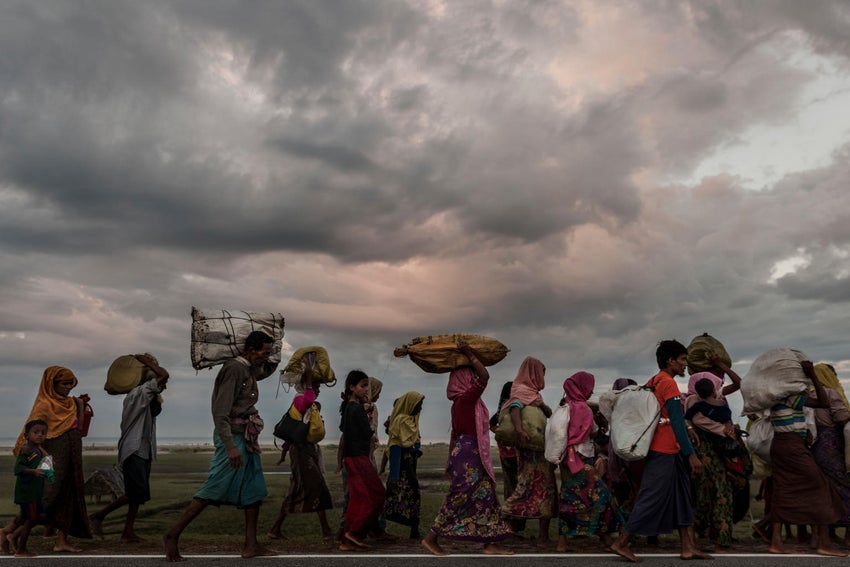
What happened to the Rohingya in August 2017?
Following claims that Rohingya militants were attacking police checkpoints, violence erupted in Myanmar's Rakhine State in August 2017, and hundreds of thousands of Rohingya people – nearly 60 per cent of children – fled for their lives to neighbouring Bangladesh. They joined around 300,000 others who had fled Myanmar in previous years.
A further 140,000 Rohingya were forced into camps within Rakhine State, unable to return to their homes where they had lived and worked for generations.
Devastatingly, there were widespread atrocities made against the Rohingya people, which drew international attention. Seven years on, and little has changed for the Rohingya people.
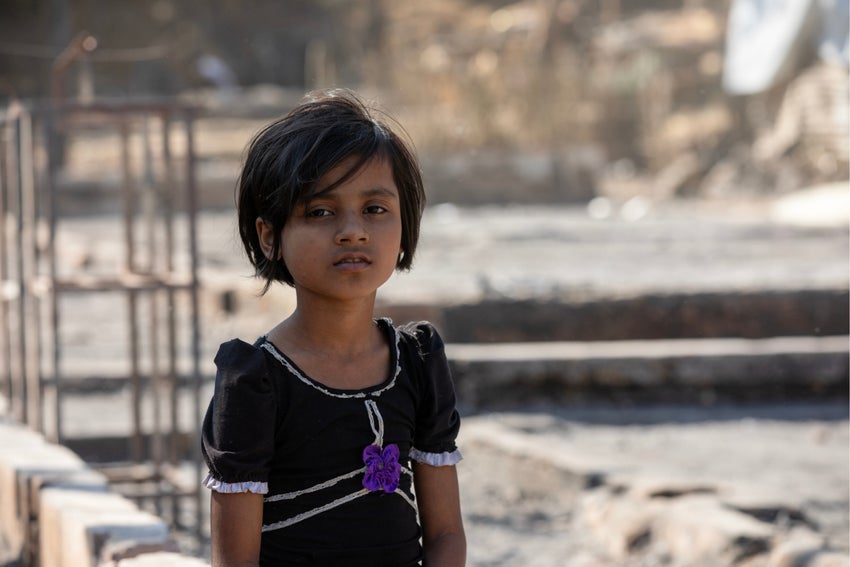
What is the Rohingya Crisis?
Following the deadly crackdown by Myanmar's army on Rohingya Muslims in August 2017, the Rohingya are now living in limbo without legal identity in either Myanmar or Bangladesh, making them stateless.
The Rohingya refugee crisis has become a major humanitarian emergency. Around a million Rohingya, half of them children, have endured over seven years living in exile from Myanmar in what’s now the world's largest refugee camp, Cox’s Bazar in southern Bangladesh. As a stateless population, the Rohingya are denied basic rights, such as access to healthcare and education, and they rely entirely on humanitarian assistance for protection, food, water and shelter, living in temporary shelters and in overcrowded camp conditions.

How is the crisis impacting young people?
Children and young people are facing immense challenges – they are at risk of neglect, exploitation, violence, child marriage and child labour. Living in overcrowded refugee camps exposes children to disease outbreaks and malnutrition, and they have limited access to education.
Teens deprived of learning opportunities or ways to make a living are at risk of becoming a lost generation. Girls and women are at risk of sexual and other gender-based violence, including being forced into early marriage and denied learning opportunities.
Until Rohingya families are allowed to return home with their basic rights, such as safety from violence, citizenship, free movement, health and education, children and young people will remain refugees or internally displaced, living in overcrowded and sometimes dangerous conditions.
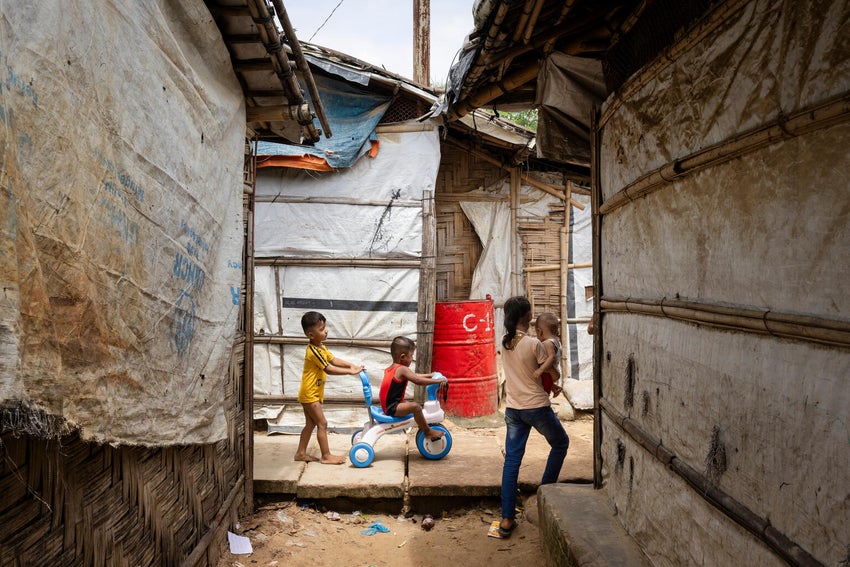
Where is Cox’s Bazar?
Located in southern Bangladesh along the Bay of Bengal, Cox’s Bazar, the longest stretch of natural beach in the world, is a fishing port and tourist destination. It’s also home to the world’s largest refugee camp.
Chief of the UNICEF Field Office in Cox's Bazar, Sayed Ezatullah Majeed explained Cox's Bazar district has eight sub-districts. All the refugee camps are concentrated in two of the eight sub-districts. There are 33 camps, with a total population of around 1 million; 23 are adjacent to each other, and they are interconnected making one big camp. A few of the other camps are 2 to 10 kilometres down the road.
Cox's Bazar is located in Bangladesh along the Bay of Bengal

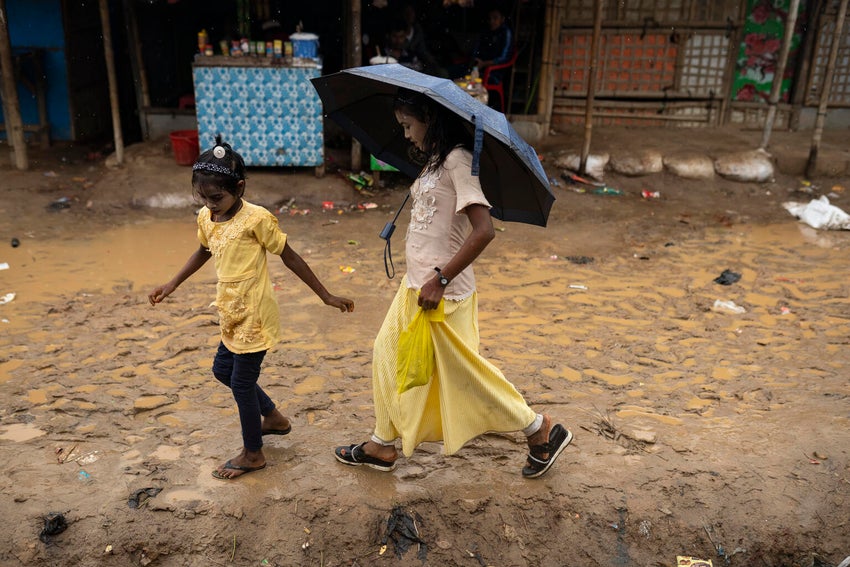
How climate-related disasters are making life harder for Rohingya refugees.
Bangladesh is highly vulnerable to climate-related disasters, such as tropical cyclones, monsoonal floods, flash floods and landslides. In 2023 alone, three devastating cyclones affected 1.3 million people. By September 2024, Bangladesh had already endured three climate-induced emergencies, including the worst floods in three decades, impacting a staggering 5.6 million people and leaving a trail of destruction, particularly in the overcrowded refugee camps that are constructed of makeshift shelters.
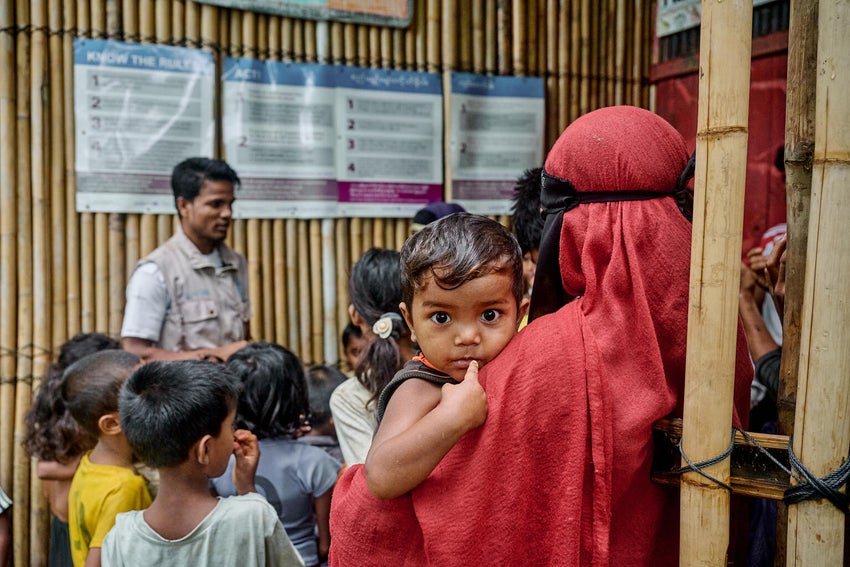
How is UNICEF supporting Rohingya children and families?
Thanks to our donors' incredible support, UNICEF continues to work alongside our partners to provide humanitarian support to displaced children and families in need, including safe water and sanitation, lifesaving healthcare and nutrition, quality education, and child protection.
270,000
In 2023, UNICEF and our partners in Cox’s Bazar supported 270,000 Rohingya refugees with access to safe water supplies.
170,000
In 2023, UNICEF and our partners in Cox’s Bazar supported services at 26 nutrition facilities and health consultations for almost 170,000 people.

Donate to children in emergencies
From Bangladesh to Sudan and Gaza, millions of children around the world face devastating losses and uncertain futures caused by natural disasters, public health crises and ongoing wars and conflicts.


